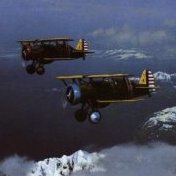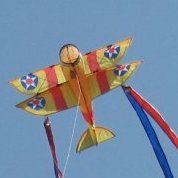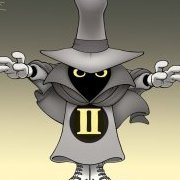-
Content Count
3,320 -
Joined
-
Last visited
About Joe Hegedus
-
Rank
Life Member (Mon-Key Handler)

- Birthday 10/11/1965
Profile Information
-
Gender
Male
-
Location
Patuxent River, Maryland
-
Interests
US carrier aviation, post-WWII; Modern RAF/RN; Flight Test aircraft; some odds and ends...
Recent Profile Visitors
16,277 profile views
-

Panels Open or Everything Buttoned Up
Joe Hegedus replied to Drifterdon's topic in General Discussion
Yep. Life’s too short, and there are too many subjects I want to build. I’m generally happy with a nice, clean build of whatever. Mostly sans weathering, as well, unless the subject absolutely demands some (like a WWII USN tri-color subject - the white underside just looks wrong without at least exhaust stains usually - although I did skip those on the big 1/32 Avenger I did). -

Panels Open or Everything Buttoned Up
Joe Hegedus replied to Drifterdon's topic in General Discussion
Buttoned up. Typically with the canopy closed as well, although there are some exceptions. I don't care about contests or competing and I'm more interested in the shape, colors and markings so I don't want any of that interrupted by open panels. Flap/slat/speed brake position is a variable; it depends on what would be typical for a parked, ready-to-go airplane and also on what options the kit offer - I'm not interested in buying aftermarket just to open a speed brake or lower the flaps. -

What was the color of the F-18 FSD aircraft speedbrake?
Joe Hegedus replied to fasteagle12's topic in Jet Modeling
While I don't have any photos of the FSD Hornets showing the speed brake open from the rear, I would expect that the white airplanes would follow the normal convention of the high-visibility scheme and have the speed brake well painted white, with the inside surface of the brake itself in red - the same as the A-4, F-4, and F-14 did in the high visiblity scheme. -
The first photo is an F6F-5K radio-controlled drone. In the last photo, the first 3 airplanes in the line are F6f-3K radio control drones and the 4th one appears to be an F6F-5K, but may be another -3K as the antenna mast of the third one is kinda blocking the view of the windscreen to say for certain. The remainder are either -3K or-5K; you kinda have to see the windscreen to be able to tell the difference. The different color tails in the photos are, I believe, indicators of the radio frequency for the remote control system installed.
-
Yes, struts, wells, interior of the doors, and the wheels are gloss white.
-
For modeling purposes, I think you can use the ADU-299 that is included in all the Hasegawa A-4 kits in 1/48. The actual adapter that attaches the LAU-127 has different wiring in it to interface with the missile, but externally I think they are the same.
-
Are there any common spruces between the A and B kits? Just wondering, because the C is a very different machine than either of the first 2; About the only common parts would be the cockpit, engine nozzle and maybe weapons. That would be the most likely reason I can think of why the don’t do a C.
-
I'm scale-flexible. Right now, I have a 1/32 SPAD, 1/48 A-7, and a few 1/72 biplanes on the bench. It kinda depends on the subject as to what scale I build in.
-
USMC never flew the A-7.
-

F-14 Seatbelt Details - How were they actually used?
Joe Hegedus replied to Curt B's topic in Jet Modeling
Again, I can’t speak for the GRU-7, but the airplanes that I flew in had NACES and the leg garter was kept attached to the seat; one fastened it around the lower leg as part of the strap-in process. I think that it could be removed from the seat leg restraint strap, but it normally wasn’t. Honestly, I think it’s easier to do it that way than to hook the garter to the strap after fastening it to your leg. (NACES only had one leg garter, that went around the lower leg just above the ankle). The garters are not part of the G-suit. -
My 2023 year in review: https://www.facebook.com/media/set/?set=a.10209893123601414&type=3








